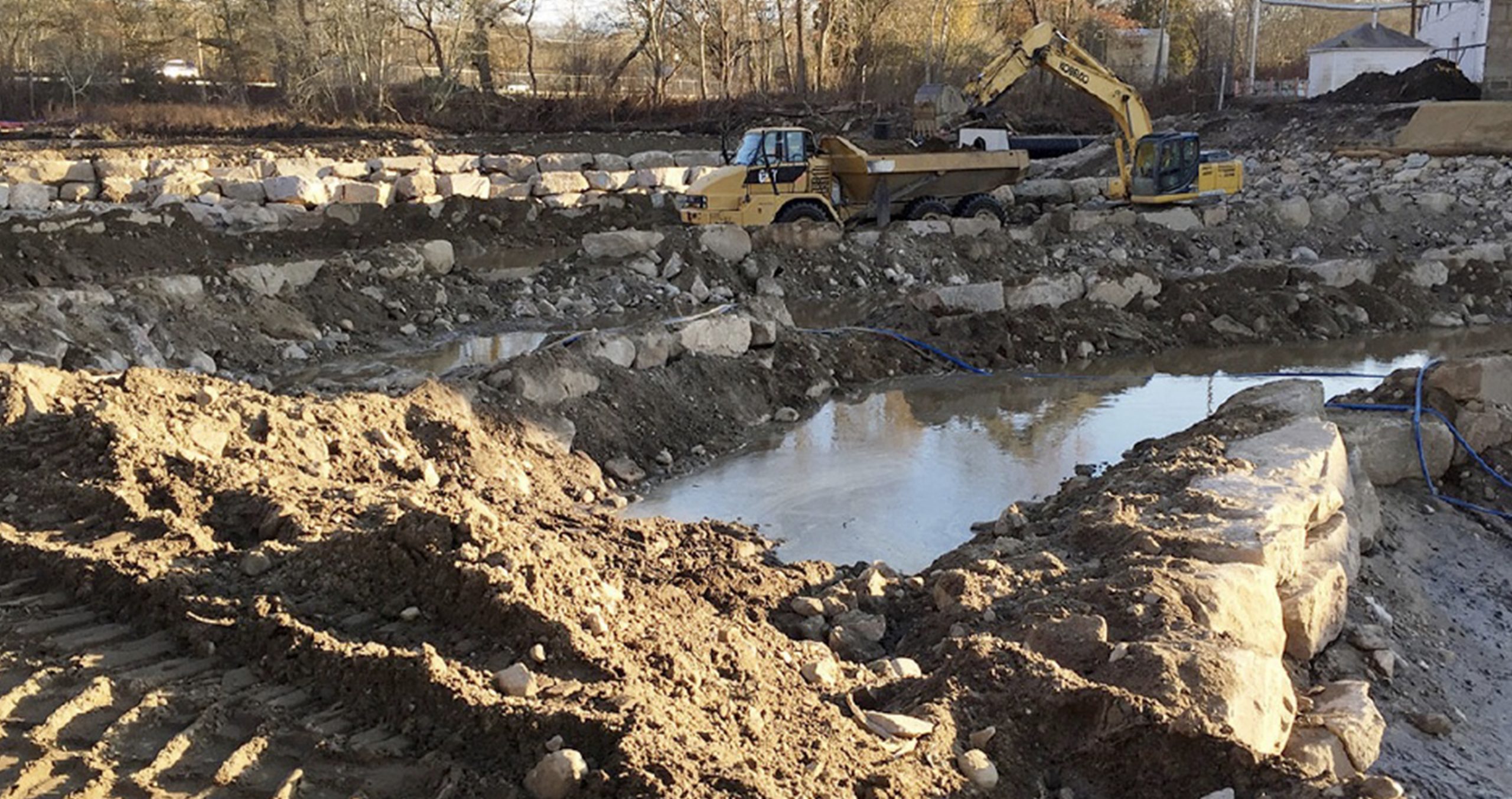


Completed:
January, 2018
Value:
$ 1,800,000

Additional Highlights
SumCo collaborated with The Nature Conservancy and the engineers to modify project components based on previous construction projects and created a unique hybrid design-build approach fitted to the needs of this waterway and project objective. Steel sheet piles were installed to create a coffer dam bypass channel, diverting river flow 15 feet and de-watering the riverbed to enable dam removal and work on the channel bed. Following dam demolition, 2-3 ton boulders were imported to create a “rock ramp” with 8 elevated stone fish weirs including pipe/head wall construction with low-flow relief notches to enable both fish and kayak paddler passage during lower river flows. Along with grading, erosion, and sediment controls, the newly exposed riparian corridor was stabilized with plantings and a segment of sheet piling for permanent support.
The Wood-Pawcatuck River Watershed covers 300 square miles in RI and southeastern CT. It’s a mostly undeveloped and intact habitat, making it one of the most important coastal watersheds in southeastern New England. The Bradford Dam, which was built on the Wood-Pawcatuck River for a mill and dye manufacturing plant in the 1880s, has impeded migratory fish to this watershed. The 6’ high and 200-foot-wide dam had been fitted with a fish ladder over 40 years ago that only functioned over a narrow range of flows. The entire system deteriorated to become a high-hazard dam, increasing the risk of flooding in the event of failure during intense storms associated with climate change. It was also an awkward portage for paddlers launching just downstream at the popular Bradford Landing. In 2017, conservation partners led by The Nature Conservancy in collaboration with the Wood- Pawcatuck Watershed Association, RI’s Coastal Resources Management Council, Department of Environmental Management and the RI Foundation came together to work with U.S. Fish & Wildlife Service and used federal funding for Superstorm Sandy recovery and resilience projects to remove Bradford Dam. SumCo performed the removal, which included creating a 10-foot-wide channel to improve canoe and kayak passage and installed step-pools to enhance migratory fish passage.
Environmental Benefits
For the first time since the Bradford Dam was constructed in the 1880s, the entire length of the Pawcatuck River is now open to native migratory species including Atlantic salmon, American shad, blueback herring, alewife, sea lamprey, American eel, and brook trout. The replacement of Bradford Dam with the installed natural step-pool fishway now provides access to 32 river miles from the estuary to spawning and nursery habitat in the headwaters of the state’s largest glacial freshwater pond – Worden Pond. In addition to benefits to aquatic species, the project provides paddlers and anglers with miles of unimpeded waters available for recreation, and climate resilience for Bradford and surrounding communities.
